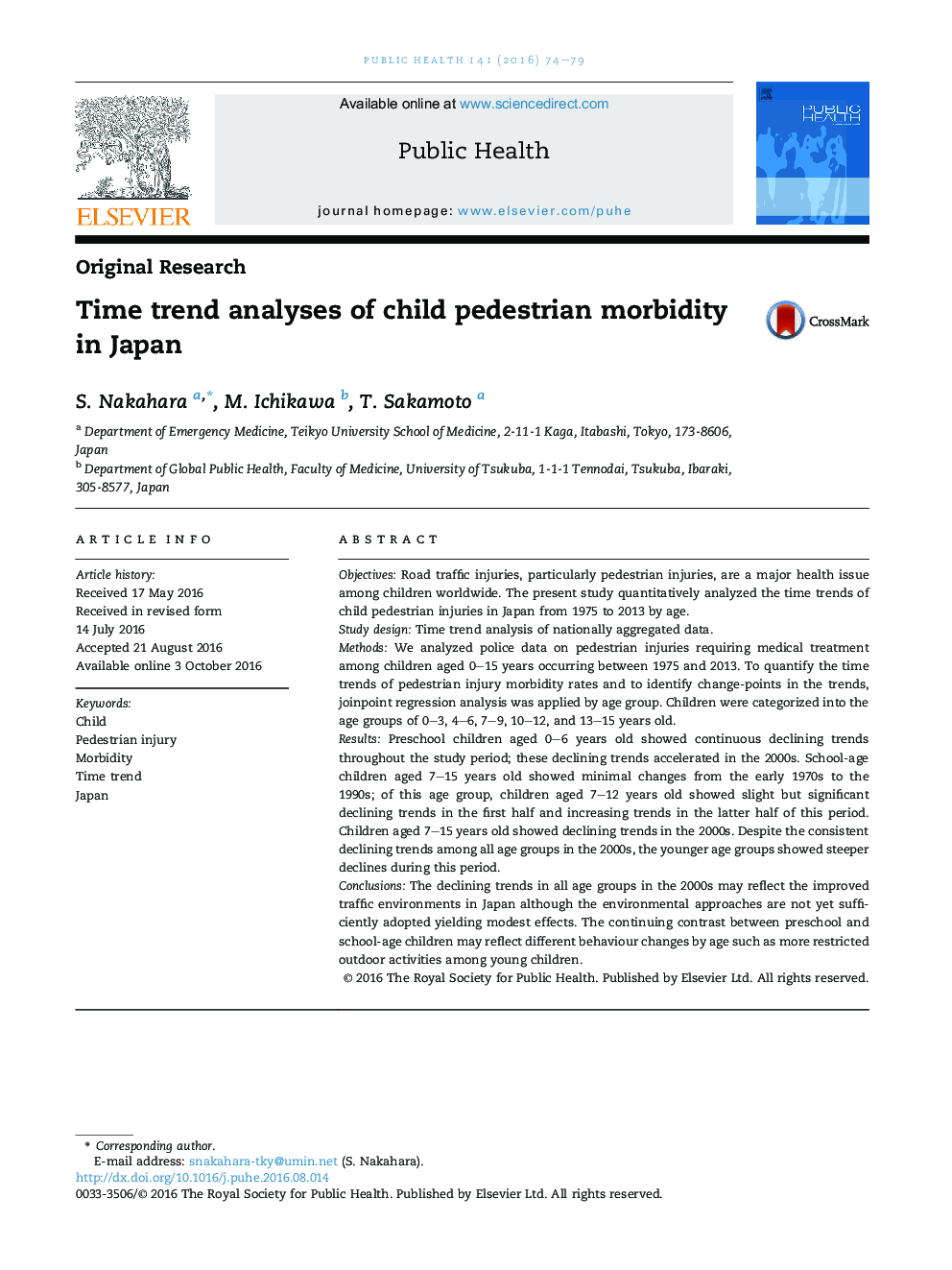| کد مقاله | کد نشریه | سال انتشار | مقاله انگلیسی | نسخه تمام متن |
|---|---|---|---|---|
| 5123076 | 1487202 | 2016 | 6 صفحه PDF | دانلود رایگان |
- Time trends of child pedestrian morbidities vary with time, place, and child age.
- This study describes child pedestrian morbidity trends by age in Japan.
- Before 2000, only preschool children showed declining trends.
- In the recent decade, school-age children also showed slight declining trends.
- Preschool children consistently showed steeper decline than school-age children.
ObjectivesRoad traffic injuries, particularly pedestrian injuries, are a major health issue among children worldwide. The present study quantitatively analyzed the time trends of child pedestrian injuries in Japan from 1975 to 2013 by age.Study designTime trend analysis of nationally aggregated data.MethodsWe analyzed police data on pedestrian injuries requiring medical treatment among children aged 0-15 years occurring between 1975 and 2013. To quantify the time trends of pedestrian injury morbidity rates and to identify change-points in the trends, joinpoint regression analysis was applied by age group. Children were categorized into the age groups of 0-3, 4-6, 7-9, 10-12, and 13-15 years old.ResultsPreschool children aged 0-6 years old showed continuous declining trends throughout the study period; these declining trends accelerated in the 2000s. School-age children aged 7-15 years old showed minimal changes from the early 1970s to the 1990s; of this age group, children aged 7-12 years old showed slight but significant declining trends in the first half and increasing trends in the latter half of this period. Children aged 7-15 years old showed declining trends in the 2000s. Despite the consistent declining trends among all age groups in the 2000s, the younger age groups showed steeper declines during this period.ConclusionsThe declining trends in all age groups in the 2000s may reflect the improved traffic environments in Japan although the environmental approaches are not yet sufficiently adopted yielding modest effects. The continuing contrast between preschool and school-age children may reflect different behaviour changes by age such as more restricted outdoor activities among young children.
Journal: Public Health - Volume 141, December 2016, Pages 74-79
